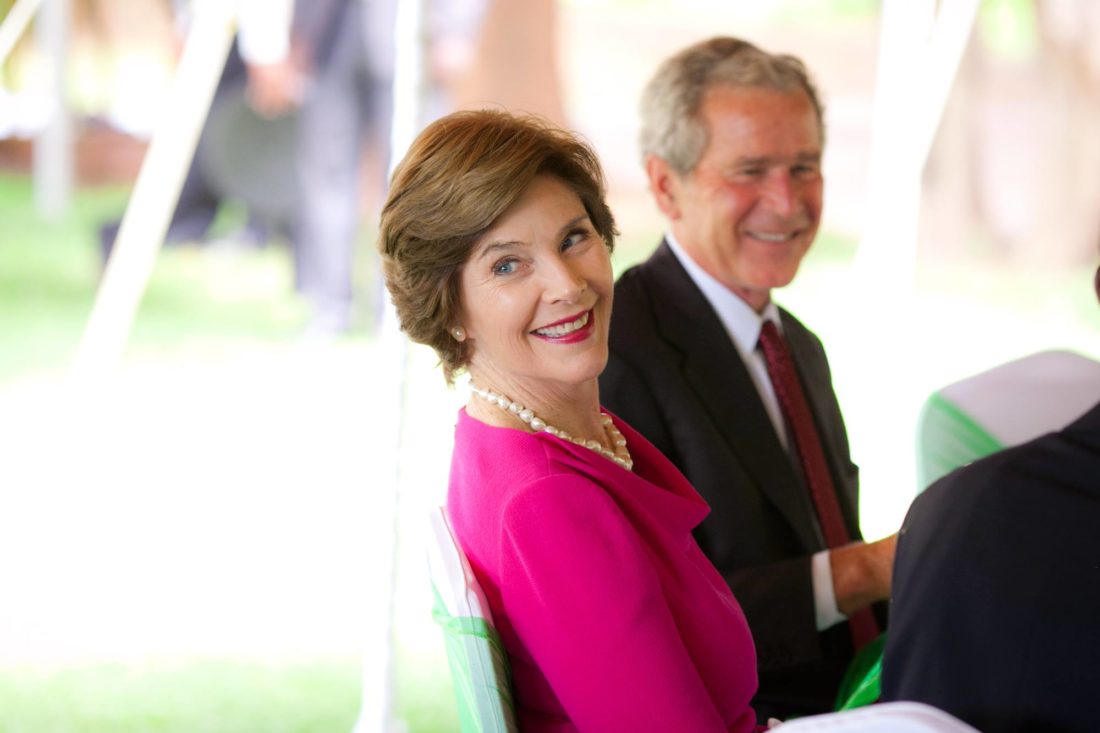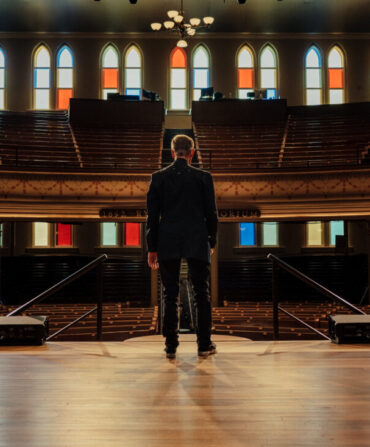Laura Bush has an invitation for you. “Presidents have always spent time at retreats away from the White House,” she says. When her family lived in Washington, D.C., they took weekends away at Camp David in Maryland, summered in Maine, and decamped to their ranch in Texas whenever time allowed. “Even Thomas Jefferson built a property beyond Monticello so he could retreat away from the crowds. In our new exhibition, we invite people to take a look at these private spots they don’t really get to see.”
The new exhibition Presidential Retreats: Away from the White House at the George W. Bush Presidential Center in Dallas explores getaways used by presidents and their families, including George Washington’s Mount Vernon, Camp David in Frederick County, Maryland, where a number of presidents worked and rested, the LBJ Ranch in Stonewall, Texas, and the Bush family retreats of Walker’s Point in Kennebunkport, Maine, and Prairie Chapel Ranch in Crawford, Texas. Personal items—Ronald Reagan’s aviator glasses, Jimmy Carter’s handwritten notes, and a model of LBJ’s amphibious car—are on display, as well as a trove of rarely-seen photographs. The exhibition reveals the importance of time spent away from the capital for leisure as well as “soft diplomacy,” or forming bonds with world leaders in casual settings.
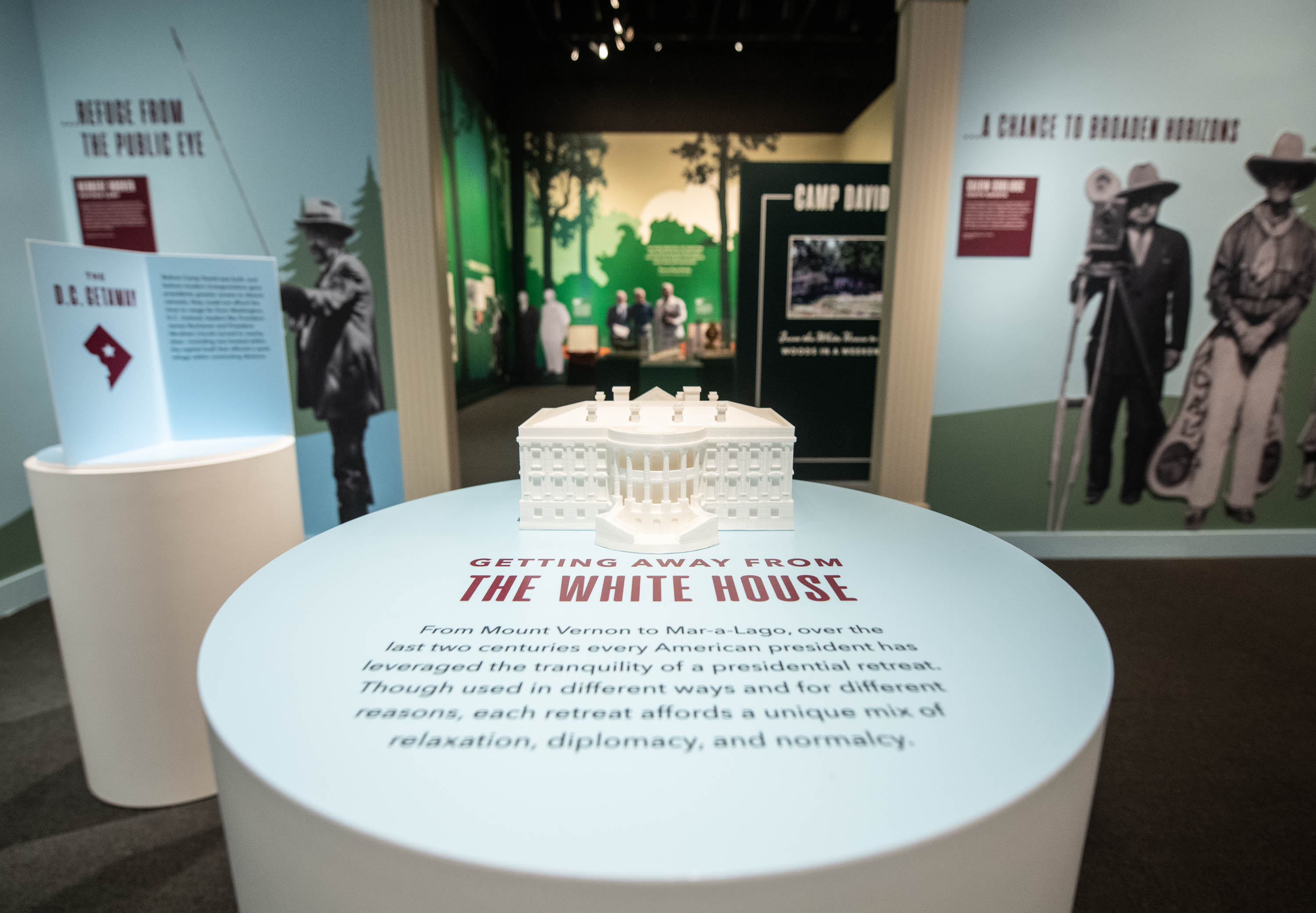
Photo: Grant Miller
A peek inside the Presidential Retreat Exhibit.
We spoke with former First Lady Laura Bush, who gives an exclusive preview of the exhibition, shares some of her favorite memories of the “Western White House” in Texas, and describes how she and George W. Bush kick back now. (Hint: She reads. He paints.)
What was the importance of getting away on a retreat while your family occupied the White House?
There’s just great relief, really, in being briefly in a place where you can walk out the front door and go for a walk. When you’re at the White House, you just can’t do that. When you leave, you leave with a big group of secret service and motorcades, and you don’t have the chance to be outside like we could at Camp David or our ranch.
The ranch in Crawford, Texas, has always been special to your family, and while your husband was in office, you brought many world leaders there.
We did host a lot of people at our ranch and they wanted to come. There is some great mythology about all Texas ranches and people from other countries always want to be able to see them. When George asked the president of China to visit us in the United States, [President Jiang Zemin] announced to the press that George had “invited him to the ranch!” Another wonderful memory I have is when the Japanese Prime Minister Koizumi came to visit us at the ranch and he and George sat by the pool and talked all afternoon. There was irony really, and a great sense of security in that, because both of their fathers were warriors in World War II and had fought each other. [Koizumi] also loved Elvis, so on another of his trips to the United States, we took him to Graceland in Memphis.
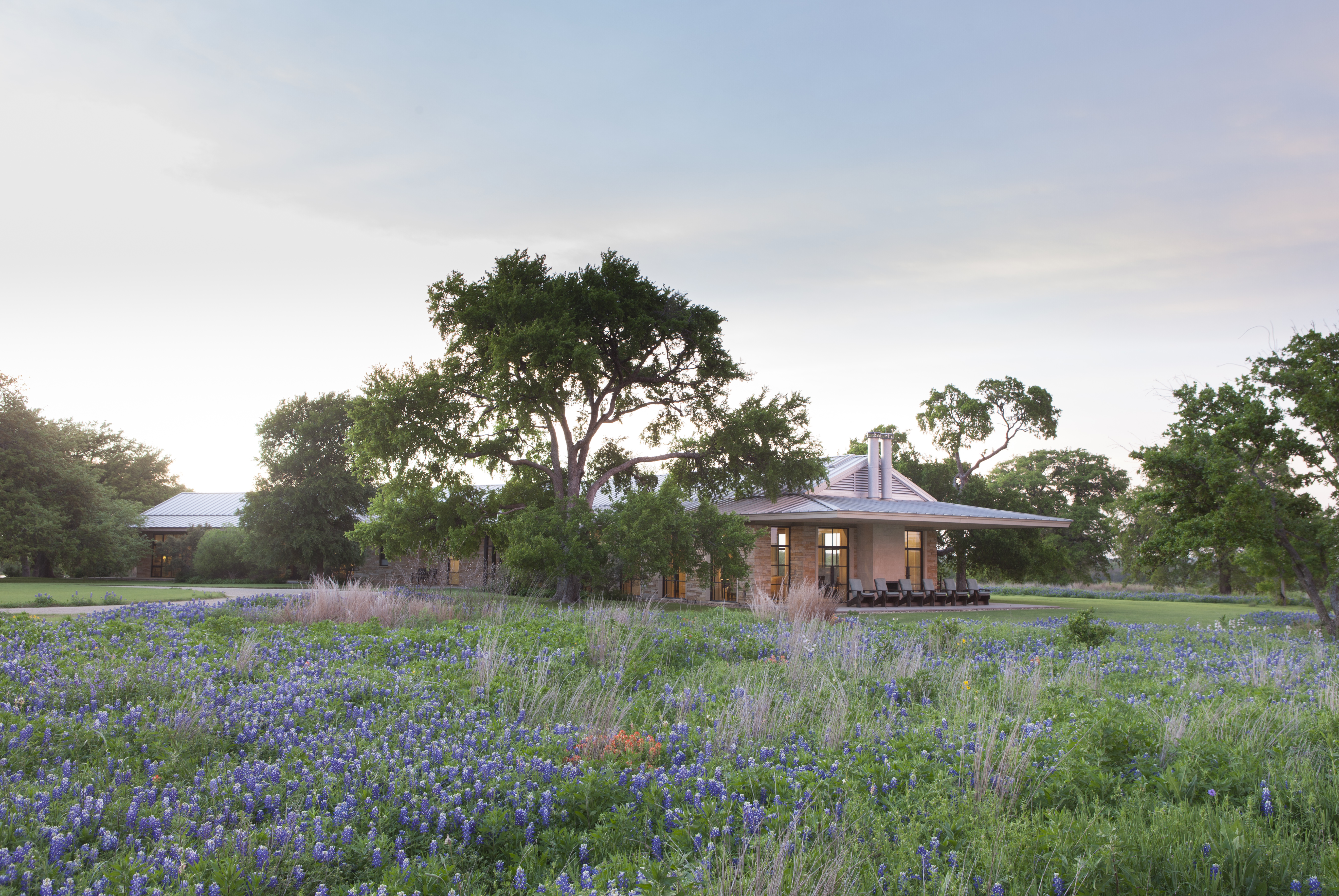
Photo: Wyman Meinzer
Prairie Chapel Ranch, the Bush family home in Texas.
How did you use your innate sense of Southern hospitality to make world leaders feel welcome?
Certainly through the menus and what we served—barbecue, steaks, the kind of food people would think they would get on a Texas ranch. It was much more relaxed to visit the ranch rather than the White House. We could have red-checked tablecloths instead of linen napkins. I think it gave people—both the world leaders who visited there, as well as George—a chance to get to know each other in a way you don’t have on a formal trip or a state visit. On the ranch, we could go for walks together. We had Angela Merkel from Germany visit us, and she and her husband and George and I walked out across the prairie.
Many retreats are mentioned in this exhibition. What were some other favorite getaways for your family?
We went to Camp David almost every weekend we could go. We had Christmas there the four years George’s dad was president, and the eight years that George was. Walker’s Point in Maine is also part of the show, where George’s dad grew up. He hosted a number of world leaders there. He would scare them to death when he would drive off in his huge boat with a couple of big engines. He bounced through the Atlantic Ocean; he loved that. This summer we’ll be going back to Walker’s Point, sadly this time without President [H.W.] Bush and Bar.
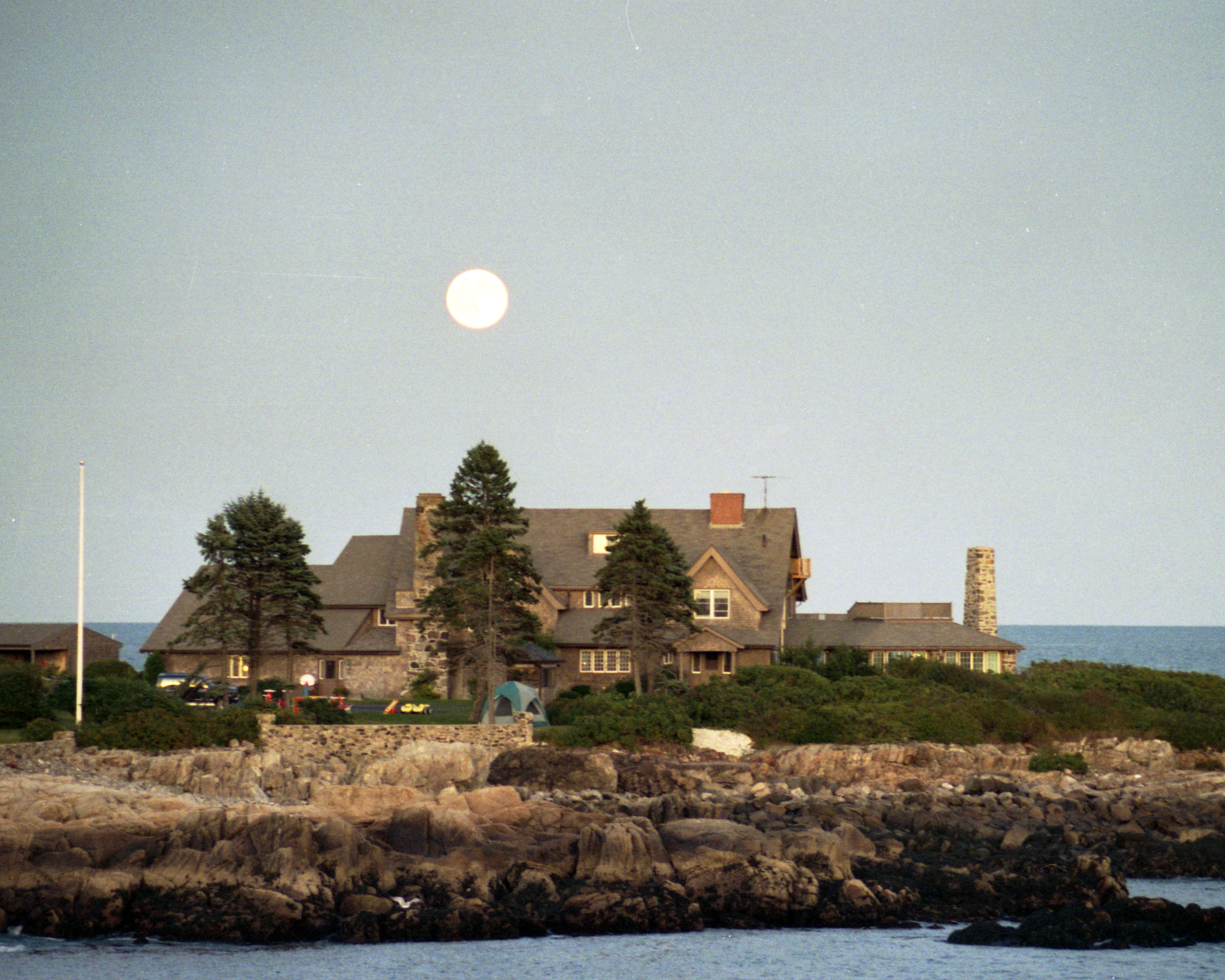
Photo: Courtesy of George W. Bush Presidential Center
The Bush home in Kennebunkport, Maine.
You and Barbara shared a love of reading. What’s on your reading list now?
I just finished reading a very cute book called Eleanor Oliphant Is Completely Fine. I just recently read All the Light We Cannot See, which I loved. I re-read things that I read years ago. Southern writers. Mark Twain. John Grisham. I love reading on my iPad because I can get a new book in 35 seconds and I can make the font really big.
Your daughter Barbara was married recently at Walker’s Point. Jenna was married at Prairie Chapel Ranch. What did it mean to you for both of your girls to get married at places so special to your family?
Jenna married the last year we lived at the White House, so it gave her the opportunity to have a fairly private wedding celebration because it was hard for sightseers to get to the ranch. Barbara married in Maine in October because she wanted her grandfather to be there and he was. She got married right outside at sunset at Walker’s Point. The big dining room table seats 22 people and there were 22 of us who sat down with President Bush and President Bush, both of them, the father of the bride and the grandfather of the bride. We had a Maine lobster dinner with corn on the cob and blueberry dessert.
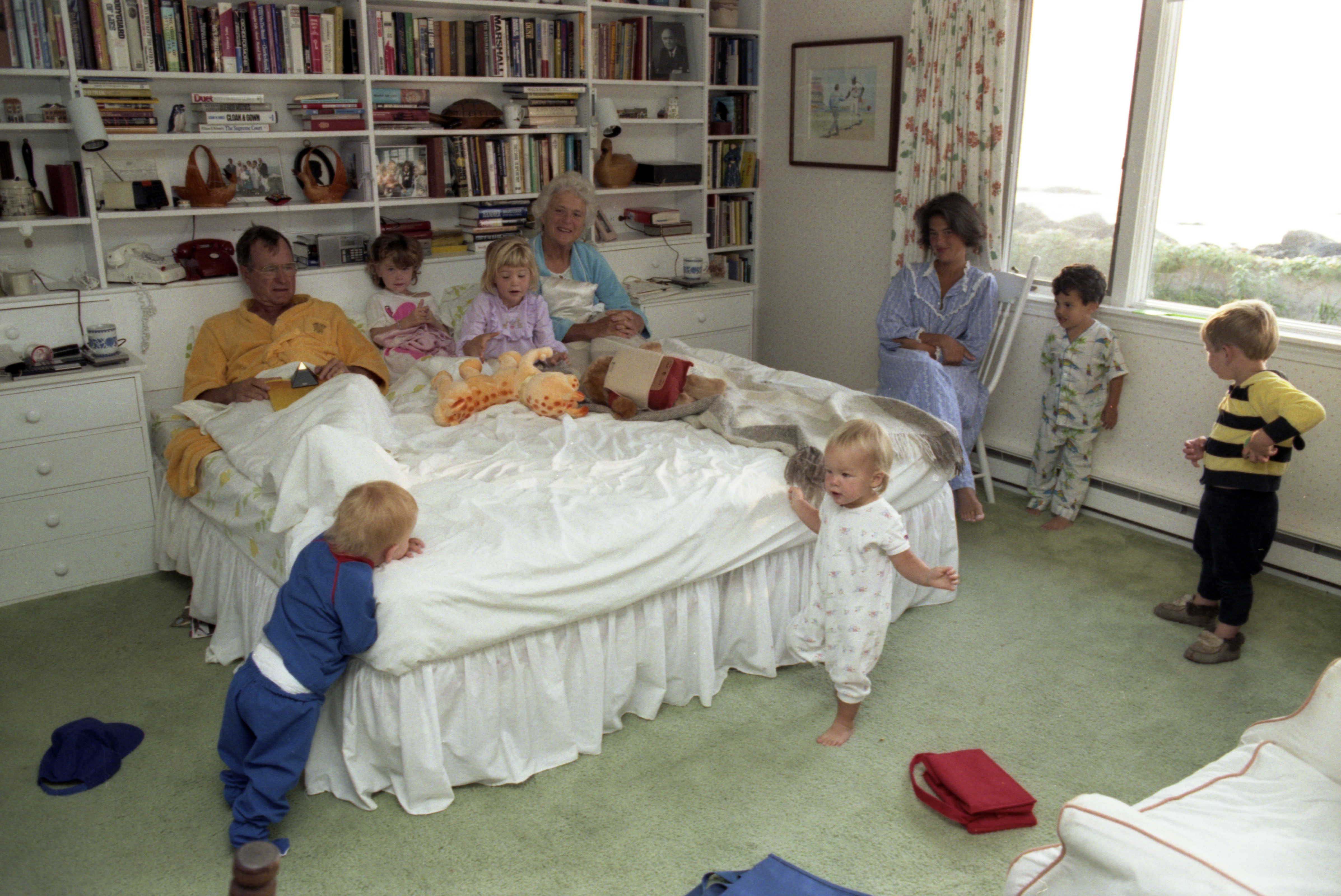
Photo: Courtesy of George W. Bush Presidential Center
Then-Vice-President and Mrs. George H. W. Bush enjoy some early morning fun with their grandchildren (from left: Pierce, Barbara, Jenna, Marshall, Margaret Bush, Jeb Jr., Sam) at their home in Maine in 1987.
At the ranch, you’ve done work with native plants and grasses. Who inspired your love of nature?
My mother did. She grew up in the Chihuahuan Desert and she loved the native plants that thrive around El Paso. She was my Girl Scout leader when we got our bird badge, and she was a great bird watcher. Midland, where I grew up, happens to be on the migratory route of a big number of birds so we had great bird-watching there. I was also inspired by Lady Bird Johnson. I liked that she thought the way the country was naturally was all right, was enough. That we were beautiful as we are. And that each part of our country is beautiful as it is with the native plants there.
Can you tell me more about what President Bush is painting these days?
He’s done a lot of cactus scenes. He enjoys the big live oak forest that’s native here. He used to have the chainsaw to cut down all the cedar on our ranch. Cedar isn’t native here. Now he’s more of a painter, because he took care of all of that. His chainsaw is part of this new show, and there’s one cute quote where a reporter asked why he doesn’t use an ax, and George said, “No, that was Lincoln who used an ax.” Now he’s having a wonderful time as an artist. He’s painted veterans that we’ve met through our bike rides and the Warrior Open golf tournament, and those paintings are traveling, now in Palm Beach. There’s something that’s very transformative about painting. You glance at your watch and realize that you’ve been working for two hours without looking up.
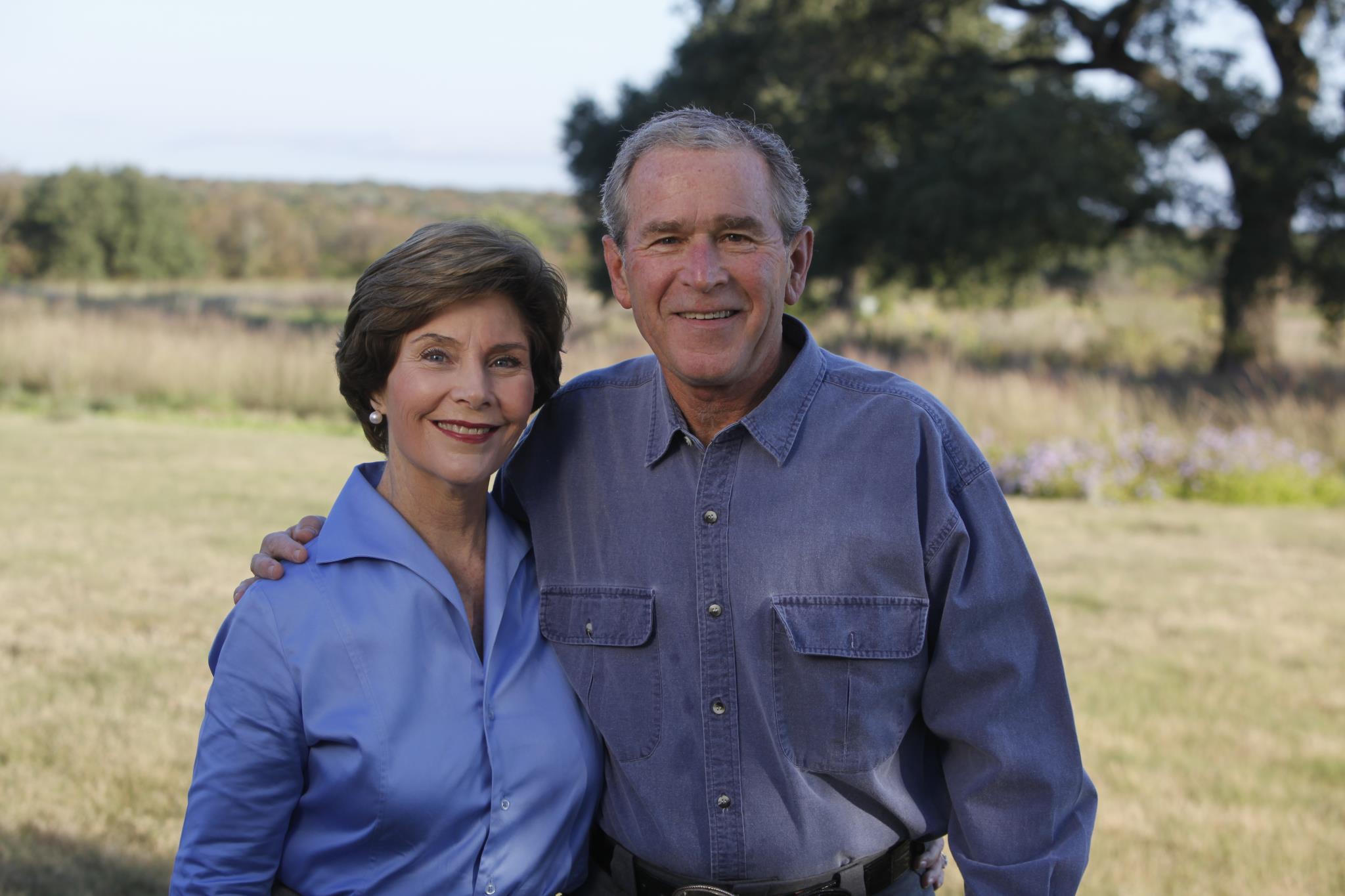
Photo: Courtesy of George W. Bush Presidential Center
The Bushes.
How has being from Texas shaped you as a person?
Texas has shaped us in so many ways, George and me. George and I met each other here. My parents are from Texas. My mother still lives in far West Texas. She’s 99. George’s family chose to be from here. As George says, they got here as quick as they could. Texas has given me a love of wide open spaces and a real appreciation for native plants, for what thrives here.
At the George W. Bush Presidential Center in Dallas, the exhibition Presidential Retreats: Away from the White House runs March 6 through October 6, 2019.


